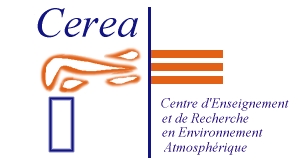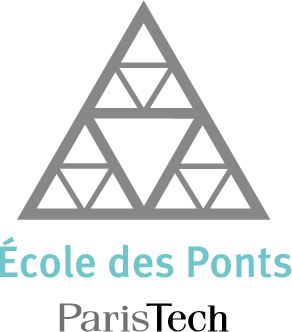Project
- Official Link
: click
here.
- Syllabus
- Objective
- Air quality, due to its impact on nature and human society, has
to be assessed, partly based on the observations from monitoring
networks, and partly from the physical or statistical knowledge. The
underlying atmospheric random field is heterogeneous, consequently
the way how the field is observed does matter. Determining the
optimal network positioning for the air quality evaluation, is of
both theoretical and practical importance. We will investigate several
network design problems, which differ in the design criterion, the
underlying random field, and the algorithm for the selection of monitoring
sites. The design methodology will be proposed correspondingly.
- Approaches
- Existing approaches are, for instance, the optimum experimental
design and the maximum entropy principle. For the
former, elaborate theory has been developed mainly based on the
linear regression, which relates the network configurations to
certain criteria, e.g. A, D, E, and G design. The objective of these
experiments are mainly for the hypothesis testing and the parameter
estimation. For the latter, the design is usually coupled with
Bayesian inference of model parameters. Intuition criteria are
proposed, e.g. maximum information gain from the network to be
constructed.
- Our approach is, first of all, aiming at practical interests,
such as the evaluation of the efficiency of existing networks and
the assimilation of new type of observations say from LIDAR
stations. Since the design criteria are often related to the
estimation of the underlying random field, we will firstly develop
and validate the estimation methods, which should be appropriate in the
network design context. More precisely, the geostatistical methods,
also called kriging methods, are examined taking into account the
properties of the concerned random field, e.g. the diurnal behavior
of ozone. Then, the criteria are optimized using combinatorial
optimization methods such as the simulated annealing
algorithm. Finally, the design results are analyzed for practical
use.
|
Staff
- CEREA : Marc Bocquet (PI),
Lin Wu (postdoc), Rachid Abida (Ph.D student), and Matthieu Chevallier
(Master student)
|
Potential Partners
- INERIS : Laurence Rouïl
- AIRPARIF : Philippe Lameloise
|
Results
- Efficiency evaluation of BDQA network by solving a network
reduction problem.
- In this study, the efficiency of the BDQA (Base de
Données sur la Qualité de l'Air, maintained by AIRPARIF)
network for ozone estimation is assessed by investigating a network
reduction problem. We examine how well a subset of the BDQA network can
represent the full network. Several interpolation methods, namely ordinary
kriging, simple kriging, kriging about means, and consistent kriging about
means, are compared for a reliable ozone estimation. It is found that the
statistical information about the means improves significantly the kriging
results. Exponential models are employed for the spatial correlations, and
it is necessary to consider the correlation model to be hourly-varying and
daily stationary. The network reduction problem is solved using the
simulated annealing algorithm. Significant improvements can be obtained
through optimization. The potential redundant stations can thus
be removed to save maintenance costs. Alternatively, the
equipments of those redundant stations might be reallocated for
a more efficient network.
- Optimal redistribution of the background ozone monitoring stations
- In this network displacement problem, a set of design
objectives are assessed, e.g. geometrical criteria of space-filling type,
minimization of kriging error (according to A, D or E-optimality conditions),
and performance of the reconstruction of ozone fields (generated by
simulations of a chemistry-transport model or by data assimilation
experiments). By displacing background stations to regular grid points over
France, significant improvements against the original background BDQA network
have been found under all the proposed criteria. The impact of the different
criteria on displacement is also investigated.
|
Publications
- L. Wu and M. Bocquet, Optimal redistribution of the
background ozone monitoring stations over France ,
Atmospheric Environment, in press, 2010
- L. Wu, M. Bocquet, and M. Chevallier,
Optimal reduction of the ozone monitoring network over
France , Atmospheric Environment, 44:3071-3083, 2010,
- L. Wu, M. Bocquet,
Optimal Reduction of the BDQA Network for Ozone Assessments Over
France , CEREA report, 2009
- M. Chevallier,
Conception optimale de réseaux d'observation pour la qualité de l'air
, CEREA report 2008-10
|
Activities
- Teaching : Marc Bocquet
is in charge of one course at graduate level (ENSTA ParisTech
+ École des Ponts ParisTech). The course is on data assimilation
algorithms, of which
one session (3h30) is for the construction of
monitoring network. This is, to our knowledge, the only lesson
available of this kind.
- Training : Matthieu
Chevallier (4th year student at École Polytechnique) has
finished one short stage from March to June in
2008. Matthieu worked in CEREA for one and a
half days per week (PIL - Projet d'Ingénieur en Laboratoire,
training at École des Ponts).
|
Presentations
- L. Wu, Network Design for Ozone Monitoring over France:
Reduction of Redundant Stations and Displacement of Background Stations
, oral presentation at conference TIES 2010
- L. Wu, Network Design for Ozone Monitoring over France
, oral presentation at summer school CIMPA 2010
- L. Wu, Optimal Reduction of the BDQA Network for Ozone Assessments Over
France , poster presentation at EGU 2009
- M. Bocquet, Network Design for Air Quality ,
oral presentation at ITM 2009
- L. Wu, Air Quality Forecast and Applications ,
UCECF seminar, University Paris VI, November 22, 2008
|



